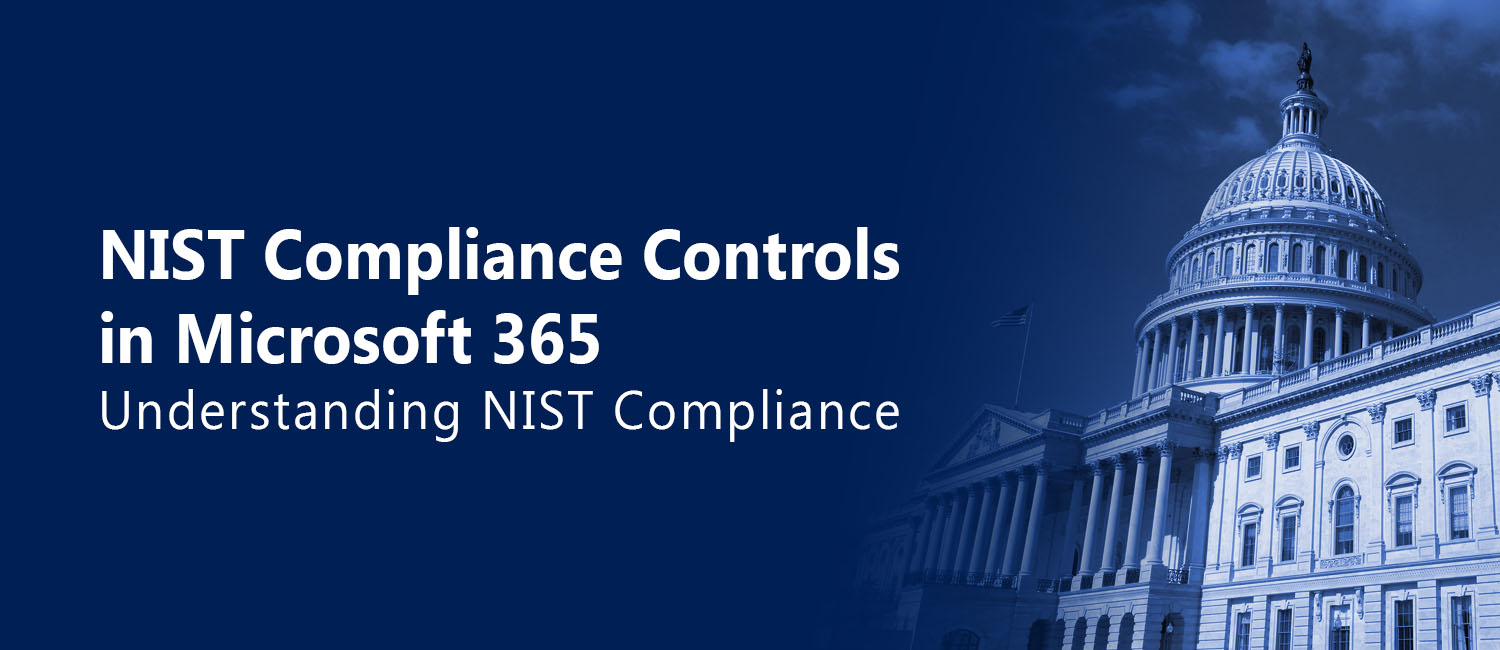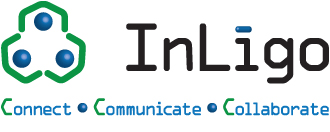
NIST Compliance
In today’s digital landscape, ensuring compliance with industry standards and regulations is of utmost importance for organizations. The National Institute of Standards and Technology (NIST) provides a comprehensive framework to guide organizations in achieving and maintaining compliance. This blog post focuses on NIST compliance in reference to Microsoft 365, highlighting the key controls, tools, and best practices for achieving and maintaining compliance.
InLigo’s Free Secure Score is a powerful tool that can help safeguard your company from potential cyber threats. By assessing your current security posture and identifying areas of vulnerability, this tool provides valuable insights and recommendations for improving your organization’s overall security.
With InLigo’s Free Secure Score, you can proactively take steps to protect your company’s data and assets, ensuring peace of mind for you and your customers.
Understanding NIST Compliance
NIST compliance revolves around the NIST Cybersecurity Framework (CSF), a risk-based approach to cybersecurity management. The CSF comprises five core functions: Identify, Protect, Detect, Respond, and Recover. These functions offer a structured methodology to address cybersecurity risks and establish effective controls.
Microsoft 365 and NIST Compliance
NIST Compliance Controls in Microsoft 365
Microsoft 365 offers a wide range of built-in controls to meet NIST compliance requirements. These controls span domains such as identity and access management, data protection, threat detection and response, and security monitoring.
Example: One of the key NIST compliance controls in Microsoft 365 is multi-factor authentication (MFA). MFA adds an extra layer of security by requiring users to provide multiple forms of verification before accessing sensitive data or resources.
NIST Compliance Tools and Features in Microsoft 365
Microsoft 365 provides various tools and features that support NIST compliance efforts, including:
- Compliance Manager: Helps assess compliance posture and provides recommendations for improvement.
- Azure Information Protection: Enables data classification, labeling, and encryption for safeguarding sensitive information.
- Advanced Threat Protection: Offers advanced security capabilities to detect and respond to cyber threats.
- Example: Azure Information Protection allows organizations to classify and label sensitive data, aligning with NIST guidelines for data protection. NIST CSF consists of three main components:
a) Core: Includes functions, categories, and subcategories forming the foundation of the framework.
b) Implementation Tiers: Help organizations determine their current level of cybersecurity risk management maturity.
c) Profiles: Customized sets of subcategories aligned with an organization’s
Key Compliance Features in Microsoft 365
Data Classification and Protection
Microsoft 365 offers robust data classification and protection mechanisms. It includes tools such as Azure Information Protection, which allows organizations to classify, label, and encrypt sensitive data. By applying consistent data protection policies, organizations can safeguard their data and meet compliance requirements related to data privacy and protection.
Access Control and Identity Management
Effective access control and identity management are critical for compliance. Microsoft 365 provides features such as Azure Active Directory, which enables organizations to implement strong authentication mechanisms like multi-factor authentication (MFA). Additionally, role-based access control (RBAC) and privileged identity management (PIM) help enforce proper access controls and reduce the risk of unauthorized access.
Audit and Reporting Capabilities
Microsoft 365 offers robust audit and reporting capabilities that simplify compliance monitoring. Organizations can track user activities, access logs, and system events using features like Audit Logs and Unified Audit Logging. These capabilities enable organizations to identify and investigate any compliance-related incidents or policy violations efficiently.
Compliance Manager Tool
The Compliance Manager tool within Microsoft 365 provides a centralized dashboard for managing compliance. It offers a comprehensive view of an organization’s compliance posture, assesses risks, and provides recommendations for improvement. Compliance Manager helps organizations streamline compliance management and stay updated with the evolving regulatory landscape.
Streamlining Compliance with Microsoft 365
Unified Compliance Framework
Microsoft 365 adheres to a unified compliance framework that integrates various regulatory requirements and standards into a cohesive structure. This framework helps organizations streamline their compliance efforts by providing a single platform to address multiple compliance obligations simultaneously.
Automation and Policy Enforcement
Microsoft 365 automates compliance processes through intelligent policy enforcement. Organizations can define compliance policies and rules within the platform, which are automatically enforced across different Microsoft 365 services. This automation reduces manual effort, ensures consistent compliance, and minimizes the risk of human error.
Intelligent Threat Detection and Response
Microsoft 365 incorporates advanced threat detection and response capabilities. It leverages artificial intelligence (AI) and machine learning (ML) algorithms to identify and mitigate potential security threats. By proactively detecting and responding to threats, organizations can enhance their compliance posture and protect sensitive data.
Simplified Audit and Reporting Processes
Microsoft 365 simplifies the audit and reporting processes through centralized tools and streamlined workflows. Organizations can generate compliance reports, perform regular audits, and demonstrate compliance to auditors or regulatory bodies more efficiently. This simplification reduces administrative overhead and ensures compliance requirements are met effectively.
Achieving NIST Compliance in Microsoft 365
Step 1: Assessing Your Compliance Requirements
Before implementing NIST controls in Microsoft 365, conduct a comprehensive assessment to understand compliance requirements, identify gaps, and prioritize remediation efforts.
Step 2: Configuring Microsoft 365 for NIST Compliance
Configure Microsoft 365 services and features to align with NIST guidelines. This includes implementing appropriate access controls, encryption measures, data loss prevention policies, and more.
Step 3: Monitoring and Auditing NIST Compliance
Regularly monitor and audit NIST compliance using Microsoft 365’s auditing and reporting capabilities. This helps track compliance status, detect anomalies, and respond promptly to incidents.
Step 4: Continuously Improving NIST Compliance
Establish a continuous improvement cycle for NIST compliance in Microsoft 365. Review and update policies, conduct periodic assessments, and stay up to date with emerging NIST guidelines.
Common Challenges and Best Practices for NIST Compliance in Microsoft 365
Challenge 1: Addressing Complex Data Governance
Organizations often face challenges in managing data governance within Microsoft 365. It is essential to establish clear data classification, retention, and access control policies to meet NIST compliance requirements. Implementing data loss prevention (DLP) measures, such as content scanning and policy enforcement, can help mitigate risks.
Challenge 2: Ensuring Robust Identity and Access Management
Effective identity and access management (IAM) is crucial for NIST compliance. Implementing strong authentication mechanisms, such as MFA, along with role-based access control (RBAC) and privileged identity management (PIM), helps protect sensitive resources and ensures appropriate access levels.
Challenge 3: Monitoring and Responding to Threats
Organizations need to proactively monitor and respond to potential security threats. Leveraging Microsoft 365’s advanced threat protection capabilities, such as real-time threat intelligence, automated incident response, and security analytics, can help identify and mitigate threats in a timely manner.
Best Practice 1: Implementing Data Classification and Protection Measures
Classify and label sensitive data within Microsoft 365 using Azure Information Protection. Apply encryption and data loss prevention policies to prevent unauthorized access and ensure data privacy.
Best Practice 2: Enforcing Strong Authentication and Authorization Controls
Implement multi-factor authentication (MFA) for user accounts and enforce strong password policies. Utilize RBAC and PIM to control access privileges and regularly review access permissions to maintain the principle of least privilege.
6.6. Best Practice 3: Deploying Advanced Threat Protection Mechanisms
Enable Microsoft 365’s advanced threat protection features, such as anti-malware scanning, email filtering, and anomaly detection, to proactively detect and respond to potential security threats.
Conclusion
Achieving and maintaining NIST compliance in Microsoft 365 requires a comprehensive approach encompassing controls, tools, and best practices. By leveraging the built-in features and following the recommended guidelines discussed in this blog, organizations can strengthen their security posture, protect sensitive data, and meet NIST compliance requirements effectively. Microsoft 365 offers a comprehensive suite of features and tools that make it easier for organizations to meet their compliance requirements. By leveraging the data classification and protection features, access control mechanisms, robust audit capabilities, and the Compliance Manager tool, organizations can streamline their compliance efforts, enhance their security posture, and achieve and maintain compliance with greater efficiency and effectiveness.

